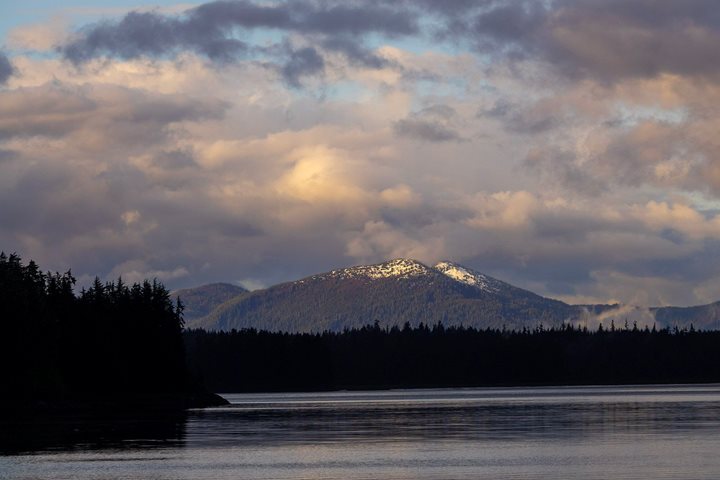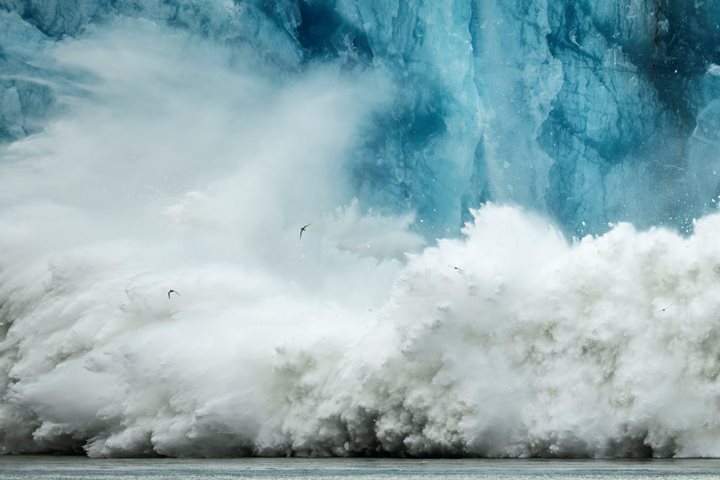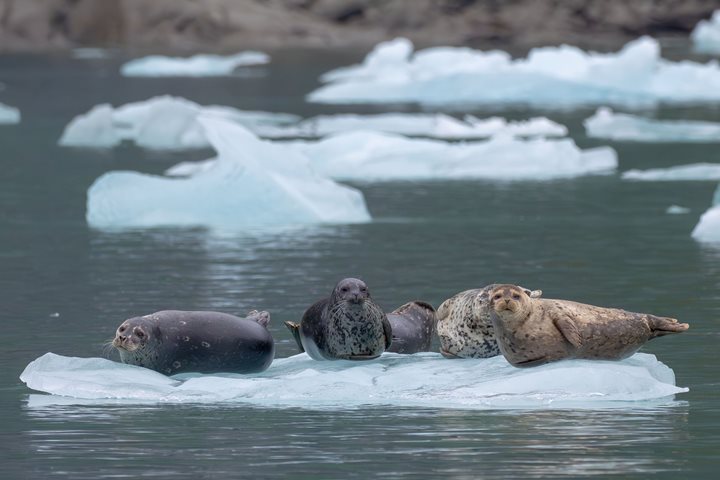Misty Fjords National Monument has an annual rainfall of about 160 inches. That averages to about a half inch per day. The past two stormy days had above-average rain, and gossamer waterfalls appeared — some coming from the top of 3000-plus-foot cliffs surrounding the fjord known as “God’s Pocket.” This lovely inner bay has mostly cliff walls and deep water. One end of the long pocket has a wetland with an active salmon creek running through it. Harbor seals popped their heads up around our Zodiac; they were here to take advantage of a fish dinner. Guests had the choice of kayaking near this wetland, or cruising by Zodiac along the outer edge of the pocket. The question of the day was, of course, “What are you in God’s Pocket?” This writer proclaims to be a shiny nickel. And in jest, her husband is lint.
- Daily Expedition Reports
- 15 Aug 2023
Misty Fjords National Monument, 8/15/2023, National Geographic Sea Lion
- Aboard the National Geographic Sea Lion
- Alaska
Kimberly Baldwin, Naturalist
Family vacations to the Jersey shore engendered a deep love affair between the ocean and Kimberly Baldwin. But growing up in Pennsylvania proved challenging for a hopeful marine biologist. College afforded the opportunity to earn a B.S. in Marine Bio...
Read MoreShare Report
Alaska Escape: LeConte Bay, Wrangell and Misty Fjords
VIEW ITINERARYRelated Reports
5/29/2025
Read
National Geographic Sea Bird
Endicott Arm
Dawes Glacier, located at the head of Endicott Arm in Southeast Alaska, is an active tidewater glacier in the remote Tracy Arm-Fords Terror Wilderness Area. Reaching the glacier requires a 30-mile journey through a narrow fjord lined with sheer rock walls rising over 3,000 feet. These cliffs are veined with waterfalls and often blanketed in mist. Throughout the fjord, remnants of the glacier float in the form of icebergs. The glacier feeds cold, silty meltwater into the fjord, giving the water a distinctive milky-green hue and supporting a rich marine food web. Harbor seals were hauled out on ice floes near the glacier. Gulls and Arctic terns were actively feeding, likely drawn by the small fish and plankton concentrated by the glacial outflow. The glacier calved several times, hurling large chunks of ice across the water’s surface, sending the birds fleeing. The sound of the ice hitting the water echoed off the steep rock walls that rise thousands of feet on either side.
5/27/2025
Read
National Geographic Sea Bird
Dawes Glacier in Endicott Arm
We could not have asked for a better way to end the expedition. Our last day was amazing! Visiting Dawes Glacier in Endicott Arm was a highlight with its crystal-blue ice and resting harbor seals floating by on the ice. In the evening, we even got to see a couple of humpback whales off the bow of the ship. We ended the day by watching images of the beautiful moments created on our expedition during the famed guest photo slideshow.







